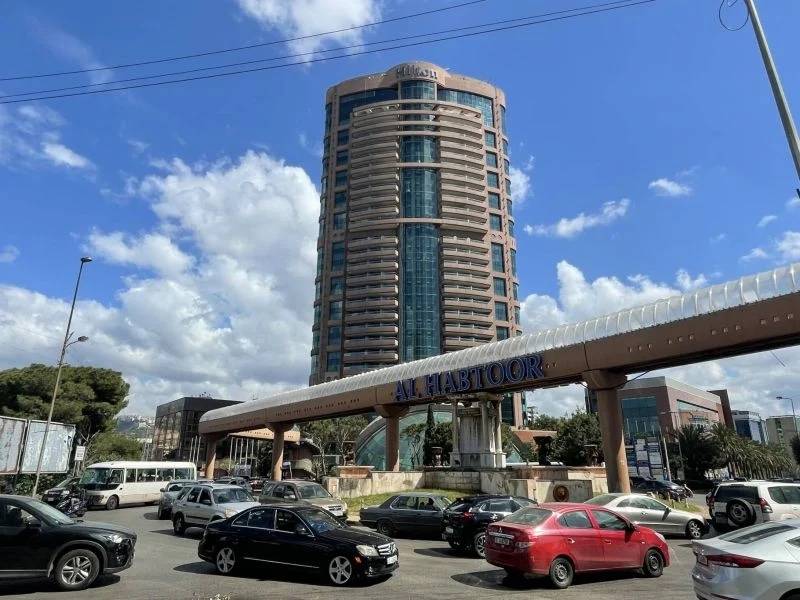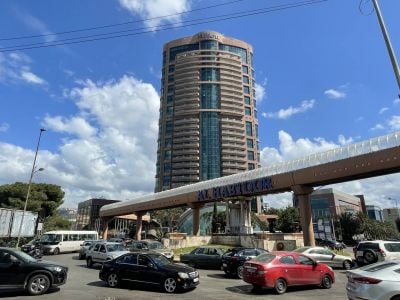
The Hilton-Habtoor Center roundabout in Sin al-Fil. (Credit: PHB)
The Lebanese economy was expected to experience growth as the eagerly awaited tourist season approached. Many participants in the economy had been foreseeing an exceptional season since spring.
In June, the Purchasing Managers Index (PMI), surpassed the 50-point threshold for the second time in a decade. Reaching 50.2 points, it achieved its highest level since its inception in 2013, improving by one decimal place compared to August 2022.
The decline observed in April and May will not have jeopardized the overall positive trajectory that has been unfolding since the beginning of the year. However, it is worth noting that the index value only signifies a modest improvement in the sentiment of purchasing managers regarding the economic situation.
The Lebanese PMI, which is generated by BlomInvest in collaboration with Markit, relies on surveys conducted among purchasing managers in local companies. The resulting score indicates a contraction in activity when it falls below 50 points, and conversely, an expansion when it surpasses this threshold. A decline in the index value compared to the previous month suggests an acceleration of the downturn, while an increase implies the opposite.
Ali Bolbol, chief economist and director of research at BlomInvest, characterized the outcome as “highly anticipated,” taking into account the economy’s previous momentum generated during the preceding summer season. However, not all monitoring bodies in Lebanon share Bolbol’s perspective on the country’s return to growth in 2022.
In their recent reports published in spring, the Institute of International Finance, for instance, estimated a contraction of 2.5 percent in GDP, while the World Bank projected a slightly larger decline of 2.6 percent.
In February, Bank Audi, on the other hand, estimated 2 percent growth for Lebanon by the end of 2022. These figures, however, are challenging to substantiate as the official data from the Central Administration of Statistics (ACS) has not yet been updated.
Bolbol expressed concerns that the modest improvement in economic conditions witnessed in June might be misinterpreted as a complete “return to normalcy.” He emphasized that Lebanon has been grappling with a crisis since 2019 and highlighted the necessity for substantial reforms to achieve a sustainable turnaround in the economic outlook.
This article was originally published in French in L'Orient-Le Jour. Translation by Sahar Ghoussoub.
